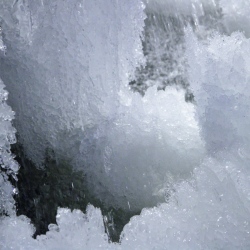
When a donor dies, a timer starts counting down. Once a surgeon removes a kidney from a body, it can only survive for about 36 hours. Livers, four to 16 hours; hearts, just three to five. But there could be a way to add more sand to the hourglass: organ banking. Scientists aim to find a way to preserve organs, creating a stockpile for when patients need them.
The most popular organ-preserving method being researched is cryopreservation, the deep freeze of living organisms or organic material, usually with liquid nitrogen. Right now, cryopreservation is tough, for the same reason that previously frozen meat doesn’t taste as good as fresh stuff: Ice crystals. When crystals form, they damage cells and tissues, making an organ impossible to transplant.
The solution, at least for human tissue, is to freeze and unfreeze the organ fast enough to keep ice from collecting on the surface. Additionally, when you’re bringing an organ back to body temperature, uniform heating is essential to avoid thermal stress that could crack the tissue (like an ice cube dropped in lukewarm water).
The biggest milestone in cryopreservation came in 2005, when Greg Fahy successfully cooled a rabbit kidney down to a vitrified form, a glass-like form of stasis. Vitrification is an intensely fast process that avoids ice-crystal formation, it’s the same way doctors preserve human egg cells and embryos. Many hoped this breakthrough would light the path towards whole organ preservation. But Fahy couldn’t figure out how to re-animate the organs without cracking from the thermal stress of heating.
John Bischof, an nanoengineer at the University of Minnesota, thinks he’s found a solution to that problem. He proposes dropping vitrified organs into cryopreservant, basically, anti-freeze, that contains magnetic nanoparticles. When they’re exposed to RF waves, the nanoparticles start vibrating, heating up the solution by over 100 degrees Celsius per minute and warming the organ from within. Bischof and his colleagues have shown their wiggling nanoparticles work in different solutions and prevents ice-crystal formation and cracking, but only in rodent cells and tissues.
Other researchers are trying to avoid ice formation by freezing organs, without technically freezing them. Mehmet Toner, a bioengineer at Harvard, is working to supercool tissues, lowering the temperature of the cells so quickly that the water in them remains liquid even below water’s freezing point. A lab at MIT is working on something similar called isochoric cooling, which lowers temperatures in a preservation chamber by increasing pressure while retaining the same volume.
